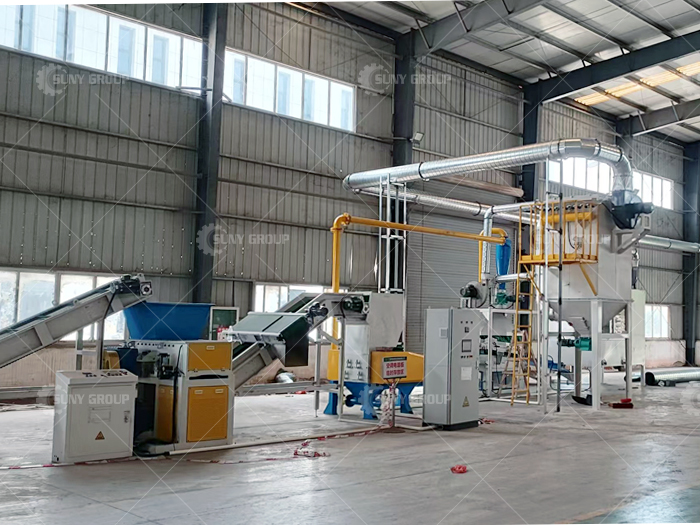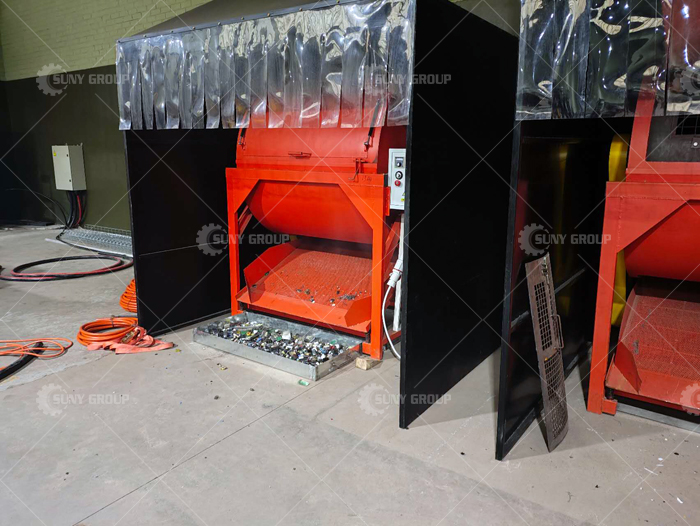


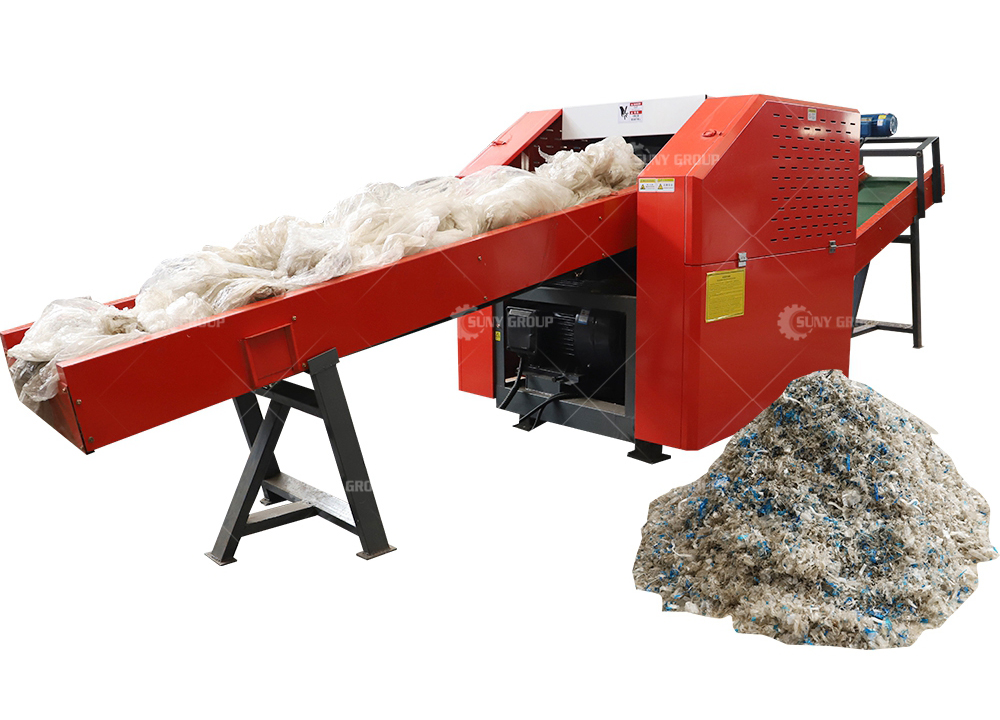
Plastic films, woven bags, scrap fabrics, leather scraps, and other soft materials with high flexibility and toughness often cause issues such as tangling, jamming, or uneven shredding in traditional shredding equipment. To address this challenge, SUNY GROUP has developed a specialized shredder designed for the recycling of soft materials, becoming a reliable tool for environmental protection companies and the recycling industry.
Core Advantages of the Shredder

Shredding Machine for Soft Material Recovery
The shredder for soft material recycling features a low-speed, high-torque design with durable, wear-resistant blades, enabling it to effortlessly cut and tear through a wide range of soft materials, including those of varying thicknesses and hardnesses. Compared to conventional shredders, it operates more stably, is less prone to blockages, and possesses strong continuous operation capabilities. Additionally, the equipment supports automatic feeding and intelligent monitoring, effectively reducing manual intervention and enhancing overall production efficiency.
Wide Range of Applications
This equipment finds applications across multiple industries. Plastic film and woven bag recycling plants can use the shredder to quickly process waste materials, facilitating subsequent cleaning and pelletization; the textile industry can utilize it for the shredding and reuse of old clothing and fabric scraps; and industries such as leather goods, automotive interiors, and home textiles can efficiently recycle their scrap materials through this equipment. It not only enhances raw material reuse rates but also helps businesses reduce processing costs.
Environmental and Economic Dual Value
Through proper shredding and recycling, soft materials that were once considered waste can be reintroduced into the production cycle, aligning with the call for green development while expanding the company’s profit margins. For businesses pursuing efficient, stable, and environmentally friendly recycling operations, such equipment is undoubtedly a worthwhile long-term strategic investment.
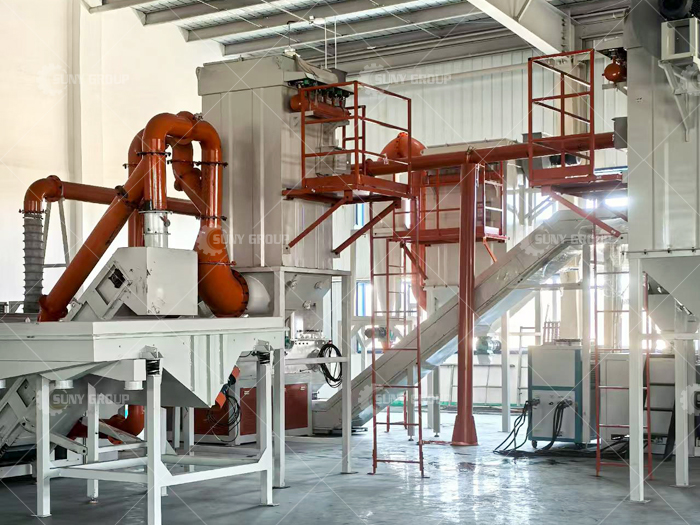

With the widespread use of lithium-ion batteries in new energy industries and electronic products, the number of used batteries is rapidly increasing. Careless disposal not only wastes resources but also poses a serious environmental pollution. Therefore, building an efficient and safe lithium battery recycling line is both an environmental imperative and a business opportunity.
Our independently developed and manufactured lithium battery crushing and recycling equipment efficiently processes used lithium-ion batteries. The entire production line comprises a variety of core equipment, including a shredder for initial crushing, a Z-shaped air classifier for removing light impurities, a hammer crusher for deep crushing, airflow screens and circular vibrating screens for particle size separation, as well as a spray tower and dust removal system, ensuring an environmentally friendly and pollution-free process. Each piece of equipment is precisely coordinated to ensure continuous and stable operation.

Lithium Battery Crushing and Recycling Equipment
The production process begins with the feeding and coarse crushing of used batteries. The shredder disassembles the batteries into particles suitable for subsequent processing. The Z-shaped air classifier then separates the lighter separator material. After further crushing in the hammer crusher, the mixture enters a multi-stage screening system where airflow screens and circular vibrating screens provide precise grading and separation. The spray tower and dust removal system effectively absorbs dust and exhaust gases, ensuring a clean and safe working environment.
Finally, the production line efficiently separates and recycles materials such as black powder (black mass), battery casings, separator paper, copper, and aluminum from used lithium batteries. Black powder, rich in rare and precious metals such as cobalt, nickel, manganese, and lithium, serves as a key raw material for the manufacturing of new energy batteries. Copper and aluminum materials can be reused in industrial production, achieving resource recycling.
If you’re planning to enter the lithium battery recycling industry, this efficient, environmentally friendly, and highly automated production line will help you quickly commence operations and enhance your competitiveness. For detailed equipment specifications, production capacity, and a quote, please contact us for a product catalog and proposal.
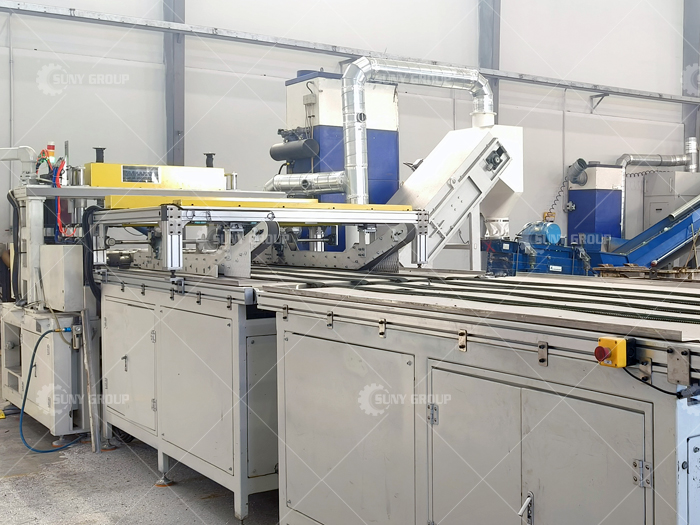

Czech Photovoltaic Panel Recycling Plant Customer Site
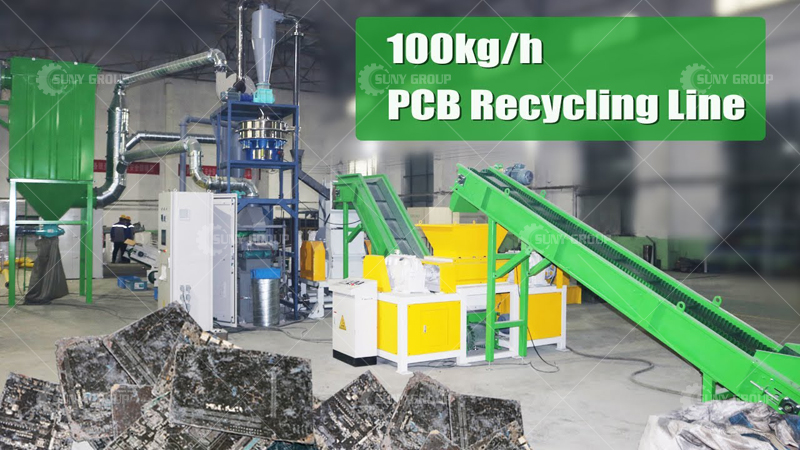
The core of the e-waste shredding production line lies in “fine disassembly + efficient sorting.” The entire system typically consists of a loading and conveying system, a shredder, magnetic separation equipment, an eddy current separator, an airflow separator, and a dust removal device.
First, the e-waste is conveyed by conveyor to a heavy-duty shredder for initial shredding. The material then enters a secondary crushing stage, where it is further refined to a particle size suitable for sorting and separation. Metals and non-metals are then effectively separated through magnetic and eddy current separation processes, ultimately achieving high-purity recovery of materials such as copper, aluminum, iron, and plastic.
This production line processes a wide range of materials, including used computer motherboards, mobile phones, televisions, and rice cookers, as well as scrap circuit boards, cables, and hard drives from industrial equipment. Flexible configuration modules can be adjusted to meet different types of e-waste, providing customized processing solutions.
Environmentally, the system is equipped with multi-stage dust removal equipment to effectively control dust and odor throughout the entire processing process, complying with national environmental standards. Regarding resource recovery, the high separation rate ensures maximum metal recovery, significantly increasing economic value.
In general, the electronic waste crushing and recycling production line is not only a manifestation of sustainable development but also a modern solution that combines economic benefits and social value. It is suitable for scenarios such as environmental protection enterprises, recycling stations, and large industrial parks that have large-scale demands for electronic waste treatment.
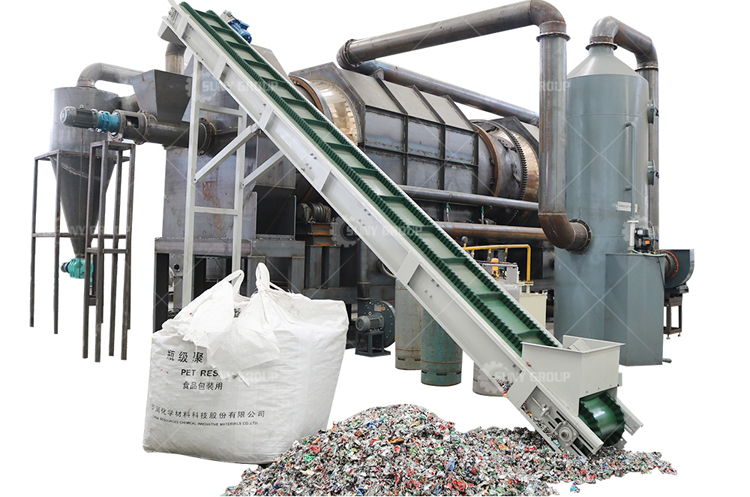
Paint stripping is a crucial step in the recycling and reuse of UBC’s scrap aluminum cans. This technology not only effectively reduces metal loss but also minimizes environmental emissions, making it a crucial component of sustainable development.
Our paint stripping technology utilizes a rotary kiln to heat UBC’s scrap aluminum can fragments. During this process, convective heat transfer effectively removes the organic coating on the can surface. This unique thermal treatment ensures superior paint stripping results, ultimately resulting in high-quality paint-free aluminum.

Decoting Machine for UBC Scrap Can
Our technology offers significant advantages over traditional recycling methods. First, it significantly improves the purity of the recycled aluminum, thereby increasing its value in downstream applications. Second, because the organic coating is removed in a controlled environment, hazardous emissions are significantly reduced, complying with increasingly stringent environmental regulations. Furthermore, the optimized process reduces energy consumption, further improving recycling efficiency and profitability.
We understand that efficient and environmentally friendly recycling technology is key to a circular economy in the aluminum industry. Our paint stripping solution is designed for this purpose. It’s more than just a piece of equipment; it’s a proven process designed to help you stand out in a competitive market.
If you are interested in recycling and repurposing aluminum cans at UBC and would like to learn how we can enhance your business value through advanced paint stripping technology, we sincerely invite you to contact us. Our professional team will provide you with personalized guidance and customized solutions.
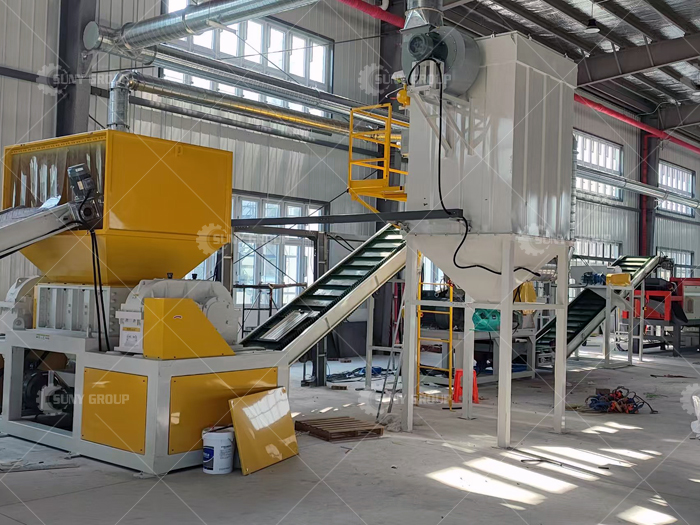
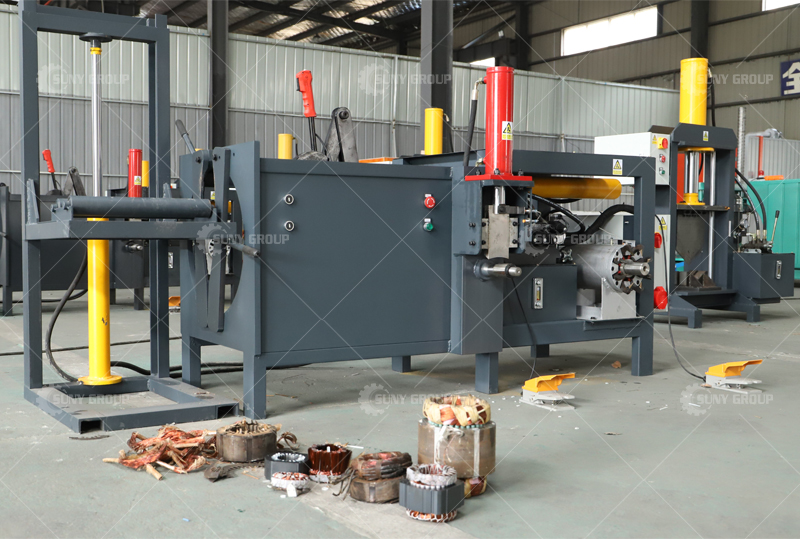
The stator copper extractor is a highly efficient equipment specially used in the motor recycling industry. It is mainly used to quickly separate the copper wire in the waste motor from the stator core. With the widespread use of motors in the industrial, home appliance and automotive fields, the demand for recycling waste motors has increased year by year, and how to extract copper wire efficiently and with low loss has become the key. The stator copper extractor is designed for this purpose. It can greatly improve the copper recovery rate, while reducing the tedious process of manual disassembly and improving overall work efficiency.

Stator Copper Extractor Machine
The equipment usually adopts a hydraulic or electric drive system to push out the copper wire inside the stator as a whole or pull it out in sections through a strong thrust to avoid the damage of the copper wire caused by traditional cutting methods. With the automatic clamping and rotating device, stators of different sizes can be accurately fixed and quickly processed. The whole operation process is simple. The staff only needs to put the stator into the equipment and start the program to complete the separation of the copper wire and the core, which greatly saves manpower and time costs.
In terms of performance, the stator copper extractor has the characteristics of high efficiency, low noise, safety and stability. Some models are equipped with an automatic adjustment function, which can automatically adjust the working stroke according to different specifications of stators, so as to achieve multiple uses of one machine. Its sturdy body structure and wear-resistant tool design ensure long-term stability and low maintenance costs. At the same time, the equipment pays attention to environmental protection in its design, and the separated iron core can be directly recycled and reused to maximize resource utilization.
For waste motor recycling companies, the use of stator copper extractors can not only improve the purity and recovery rate of copper, but also shorten the disassembly cycle and increase overall production capacity. With the continuous increase in the value of copper resources, the return on investment of such equipment is also getting higher and higher. Whether it is a small or medium-sized recycling station or a large recycling company, the stator copper extractor is an ideal choice for improving recycling efficiency and reducing operating costs, providing an efficient, economical and environmentally friendly solution for the motor disassembly industry.
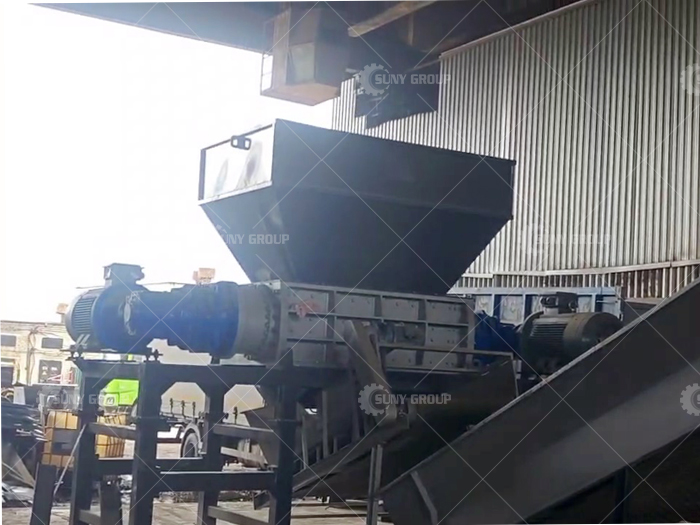
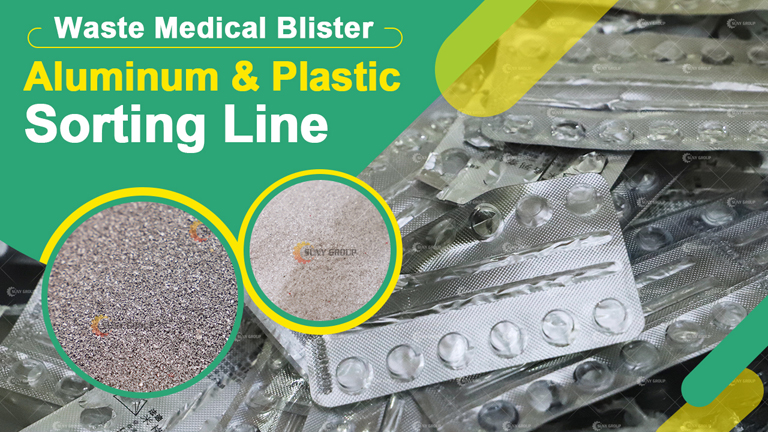
Pharmaceutical aluminum-plastic blister packaging (medicine board) is widely used in the packaging of solid medicines such as capsules and tablets. Because the aluminum foil and plastic are tightly compounded, they have good sealing properties, but they also make recycling difficult. Traditional manual separation is inefficient and polluting, and it is difficult to meet environmental protection needs. The Pharma Blister Packing Recycling Machine is designed to solve this problem and provide efficient and environmentally friendly separation and recycling solutions.

Pharma Blister Packing Recycling Machine
Through multiple process flows such as mechanical crushing, high-temperature separation, and electrostatic sorting, the equipment can efficiently peel off the aluminum and plastic layers to achieve complete separation and recycling of the two materials. The entire system runs fully automatically without manual participation, greatly improving the processing efficiency. It is suitable for pharmaceutical factories, medical waste treatment centers, and renewable resource enterprises. Especially when processing waste medicine boards, the recovery rate is as high as more than 99%, and the separated aluminum foil and plastic particles can be directly used for reprocessing or sales, truly achieving a win-win situation of resource regeneration and economic benefits.
In addition, the recycling machine has a compact structure, small footprint, easy operation, and is equipped with an intelligent control system that can automatically adjust parameters according to different materials to ensure a safe and stable processing process. The equipment is equipped with a dust removal system and a noise control device during operation, which meets environmental protection standards, effectively avoids secondary pollution, and truly achieves green recycling.
With the continuous expansion of the production capacity of the pharmaceutical industry, the pressure on the treatment of pharmaceutical packaging waste is also increasing. As a professional equipment designed specifically for pharmaceutical blister waste, the Pharma Blister Packing Recycling Machine not only solves the problems of low efficiency and heavy pollution in traditional methods, but also promotes the automation and environmental protection of pharmaceutical packaging waste treatment. Choosing this equipment means that the company is one step further on the road to green production and resource recycling.
